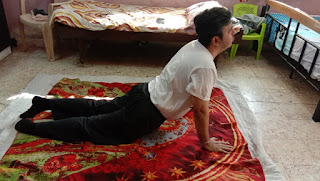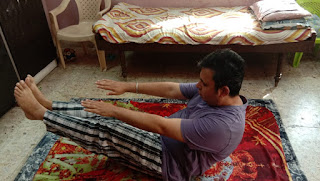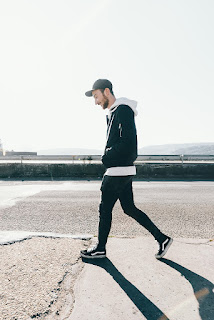Bhujangasana or Cobra Pose - How to do, its Benefits
 |
| Bhujangasana or Cobra Pose Step 1 |
 |
| Bhujangasana or Cobra Pose Step 2 |
Bhujangasana is part of the Sun Salutation or Surya Namaskar. Bhujang means Cobra and Asana means Posture. So it is called as Bhujangasana.
This pose resembles a serpent with its hood raised.
How to do Bhujangasana or Cobra Pose
- Lie on your stomach with your toes flat on the floor. Forehead should be resting on the ground.
- Keep your legs close together. Feet and heels lightly touch each other.
- Place your hands (palms downwards) under your shoulders. Keep your elbows parallel and close to your torso.
- Take a deep breath in. Slowly lift your head, chest and abdomen keeping your navel on the floor.
- Pull your torso back and off the floor with support of your hands.
- Keep breathing with awareness. Try to straighten your arms by arching your back as much as possible. Tilt your head back and look up.
- Keep your shoulders relaxed. Bend your elbows if required. With regular practice you can deepen the stretch by straightening the elbows.
- Ensure that your feet still remain close together. Keep breathing. Keep smiling.
- While breathing out, slowly bring your abdomen, chest and head back to the floor.
Benefits of the Bhujangasana or Cobra Pose
- It opens up the shoulders and neck.
- It tones the abdomen.
- It strengthens the entire back and shoulders.
- It improves flexibility of the upper and middle back.
- It expands the chest. It also improves blood circulation.
- It reduces fatigue and stress.
- It is useful for people with respiratory disorders such as asthma. Please do not practice this pose during the attack.
Contraindications of the Bhujangasana or Cobra Pose
- If you are pregnant or have recently underwent abdominal surgeries like hernia do not practice Bhujangasana. Also do not practice if you have fractured ribs or wrists.



Comments
Post a Comment